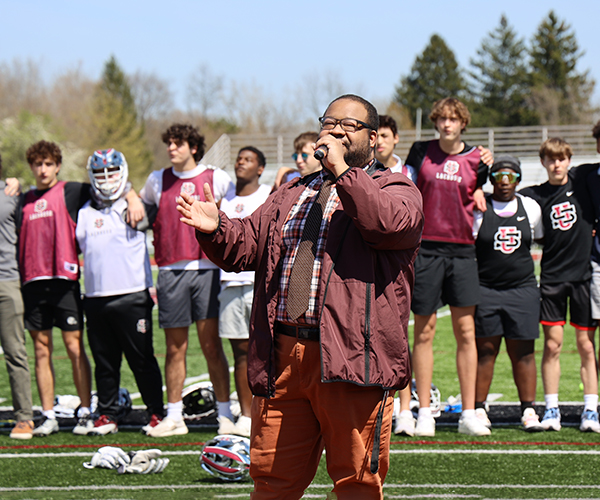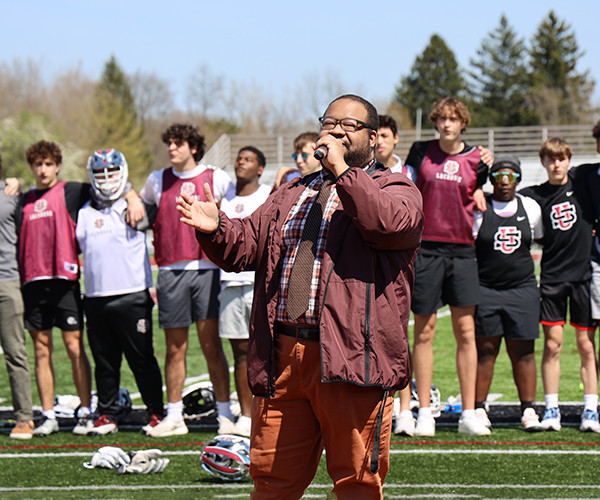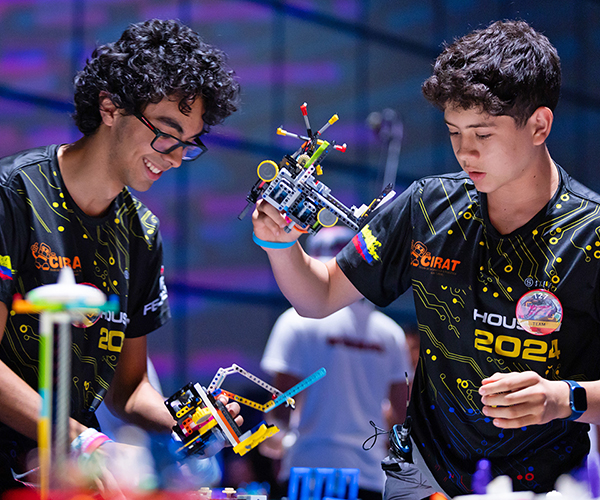It started as an itch for Tiffany Reed, a feeling that she wanted to do something else with her life but just didn't know what.
In 2007, she was working as a dinner server at the now-closed Inn at Turner's Mill in Hudson. It was a job she enjoyed, and it gave the single mother a chance to be home during the day with her son, Jack, who was 3 at the time.
"I felt like my brain needed something else," Reed recalls. "You get to that point where you're itching, and you don't know what to do."
So Reed's two closest friends staged what she describes as a "little intervention." One baby-sat Jack while the other took Reed out for coffee, sharing an ad she'd found in a magazine for Kent State University's Literacy and Independence for Family Education (LIFE) Community, a program that helps single parents return to college.
Reed had tried college once before. After three years at Concordia University Chicago, she'd stalled out after realizing that elementary education, her chosen major, wasn't really what she wanted to do with her life.
So at age 30, Reed applied and was accepted to Kent's LIFE program, which provides up to 10 single parents a year with specialized mentoring and support as well as living accommodations in Kent's family housing unit.
"I remember my first class; it was like the heavens opened up. My whole body was zinging," says Reed, now 32. "I was using my brain. My name was •Tiffany,' not •Jack's mom.' "
Although Reed fits squarely into the category of nontraditional student, she and others like her are more the norm today than the typical just-out-of-high-school undergraduate.
In fact, the National Center for Education Statistics estimates 73 percent of all undergraduates fit at least some nontraditional criteria, which include delayed enrollment, working full time, having children or taking part-time classes.
Older students are enrolling in college at rates faster than their 18- to 24-year-old peers. In its 2007 projections of higher-ed trends, the National Center for Education Statistics predicted that enrollment of students 25 and older will increase 20 percent by 2018 compared to a 9 percent increase for traditional students.
Similar trends are unfolding here at home, where Northeast Ohio's colleges and universities report increasing enrollment of nontraditional students returning to finish bachelor's degrees, make a career change, get specialized training or pursue an advanced degree. And, like Kent, they're devising creative ways to help adult learners return to the classroom and stick with it to the end.
"Even for institutions founded for that traditional learner, they're still looking at ways to improve access," says Gina Cuffari, vice president of Ohio campuses for University of Phoenix. "They have to provide options that fit with a student's life."
At Notre Dame College, Dave Armstrong has seen a wave of recent career-changers who echo a common refrain. "Usually when you see someone making a change, they're saying, •This time it will be a vocation, rather than just a job,' " says Armstrong, Notre Dame's vice president for enrollment and legal counsel.
Notre Dame has seen increases in adult enrollment of 8 to 9 percent a year over the past few years. Often such students are pursing a lifelong dream of teaching, and they've come to Notre Dame for its Teacher Education Evening Licensure program, which allows anyone with a bachelor's degree to earn a teaching certificate through evening and online courses.
That was the appeal for Mary Fry, who enrolled in the TEEL program in 2008 and is currently finishing up her final requirement — student teaching in her local school district of Hudson.
After 17 years at home with her four children, she considered going back to her previous communications career. "I was having not a midlife crisis but a career crisis," Fry says. "Even if I could go back, would they even want me?"
But filling in as a substitute teacher in her kids' schools convinced her that the corporate world was not for her, and she began working toward her teaching certificate in special education.
After overcoming her initial fears about returning to school — "the first class I took, I was terrified," she admits — she settled into life as a student alongside her kids, who were major motivators to her in developing good study skills.
"When you're younger, your parents are watching, but when you're older, your kids are watching," she says.
At Cuyahoga Community College, Pete Ross sees plenty of nontraditional students like Fry embracing the opportunity to head in a new direction with their life.
But plenty don't. "Others come in thinking, I don't want to do this. I just want to retire," says Ross, who's Tri-C's vice president of enrollment management. "Unfortunately, they don't have that choice."
That was the case for John Lubert of Brecksville, who lost his job when the printing facility he worked for closed. His Veterans Administration benefits covered new job training, but he wasn't enthusiastic about returning to school.
"It was scary," says Lubert, who enrolled in Tri-C's bioscience program in 2009. "I'm 58 years old, and all these kids in there, their minds are so sharp while mine is failing me."
Despite his anxieties, Lubert got through the 10-week program with the support of his Tri-C counselors and professors, and now he's looking for work in a medical laboratory or hospital system.
"People in Northeast Ohio, we've always had a pretty blue-collar attitude that you can come out of high school and get a good job," says Ross. "Those kinds of jobs don't exist in our area anymore. Continuing to train is more important now than ever before."
Northeast Ohio's declining manufacturing base and the resulting need for retraining are major factors in Tri-C's 12.1 percent jump in students returning to the classroom this spring compared to last.
Like Lubert, they're often fearful they won't be able to compete and must wrestle with the time management challenges posed by juggling school and work or family, says Ross. But, he adds, success is likely when they use the resources available to them early and often, whether it's tutoring, career counseling or other services.
"Now I have a chance to advance, to better myself," says Lubert. "The way the job market is now, if you don't have a degree or a certificate, you're lost."
The economy's downturn isn't just impacting the blue-collar work force, and plenty of returning students are corporate types who see the handwriting on the boardroom wall.
"We are seeing more people who are in immediate job transition or are very concerned they will need to find something else soon," says Winnie Gerhardt, director of admission for adult and graduate education at Baldwin-Wallace College. "People now understand they can't rely on that one job with that one company where they'll always be safe."
The term Mark Storz is hearing regularly from such students is "rebranding."
"We have a number of folks coming back to school talking about rebranding themselves, which is a new trend for us," says Storz, associate dean for graduate studies at John Carroll University. "They [return thinking] the job market will be better than whatever they're currently in."
Alecia Jones was awakened to her need for a new path while working in nonprofit fundraising and grant writing in the aftermath of the Sept. 11 terrorist attacks, as funding sources for nonprofits dried up.
"Everything just fell through the cracks," she says. "It derailed me."
Jones, 35, transitioned to the corporate sector for a few years but continued to mull the possibility of going back to school for a graduate degree.
"I thought maybe I'd have the confidence to try an MBA," she says. But with a full-time job, a husband and 12-year-old daughter, "it had to be something that made sense for my life right now."
After two short-lived starts at other universities, Jones found a setting that worked for her at University of Phoenix, which caters exclusively to the needs of working students. Key to her success was University of Phoenix's model of matching each student with a team of advisers who remain in contact with them throughout their enrollment.
"People need a one-to-one relationship," says Cuffari. "They understand, I'm not alone; there are resources available."
With an MBA student's confidence and her concentration in marketing, Jones launched her own business, JoVell's Café in Shaker Heights, last year. She's used it to field-test the concepts she's learning in class and uses her classmates as sounding boards for new ideas and strategies.
"One of my goals was to develop a business and launch it. I didn't want to just learn to do it; I wanted to do it while I was learning it," says Jones, who will complete her MBA this August. "[My classes] helped me see if I was on the right track."
There's another factor bringing nontraditional students back to the classroom; however, area colleges and universities are only beginning to see its impact. In August 2009, the Post-9/11 Veterans Educational Assistance Act of 2008 — also known as the New GI Bill — went into effect, making educational assistance for veterans more generous than ever before.
Stephen Dorroh of Maple Heights is one of those who jumped at the chance to use the New GI Bill to pursue his master's degree in education at John Carroll University.
"My first go-round, I was so focused on playing basketball, I didn't realize the great opportunity I had," says Dorroh of his undergraduate experience, which took him 11 years to complete. "Now I realize the value of a good education."
Those years were intermixed with a variety of jobs, from working in the salt mines to driving a school bus. But after enlisting in the Army and serving in the Iraq War, Dorroh returned with a new attitude toward his career.
"Why waste time doing things I don't enjoy?" says Dorroh, 36, and a father of five. "I want to tell people, •You don't like the job you're in and think you missed a window of opportunity? Every year you buy a car or new clothes, you could have put that money toward just one class.' "
The New GI Bill covers tuition for eligible vets up to the most expensive state school — $477 per credit hour in Ohio — plus a monthly housing allowance and book stipend. Some local schools have signed on to the VA's optional Yellow Ribbon Program, which helps cover additional tuition expense.
For Dorroh, that means his schooling is free and his monthly mortgage is covered through his 2011 graduation date.
"[Enlisting in the Army] changed my life at 30," he says. "Now I know I can accomplish anything if I put my mind to it."
Back at Kent, Tiffany Reed and son Jack are thriving. She's a resident manager for her family housing unit and a mentor to other LIFE participants. Next year, she'll graduate with a bachelor's degree in business for computer information systems and hopes to find a job as an IT analyst.
Fellow nontraditional students often come to Reed when they're struggling, and she points them toward the resources available to them. "It's the ones who take the help that are the ones who succeed," she says.
That's exactly how Reed has made the most out of her second chance at college.
"I'm more focused this time. I sit in the front row. I participate," she says. "You don't realize the opportunity you're given when you go to college so young, but now I just feel blessed for all this help we get."



